3. Managing Performance Monitor Properties
You can specify additional settings for viewing
performance information within the properties of Performance Monitor.
You can access these options by clicking the Properties button in the
taskbar or by right-clicking Performance Monitor display and selecting
Properties. You can change these additional settings using the
following tabs:
General tab On the General tab (shown in Figure 5), you can specify several options that relate to Performance Monitor view.
You can enable or disable legends (which display information about the various counters), the value bar, and the toolbar. For
the Report and Histogram views, you can choose which type of
information is displayed. The options are Default, Current, Minimum,
Maximum, and Average. What you see with each of these options depends
on the type of data being collected. These options are not available
for the Graph view, because the Graph view displays an average value
over a period of time (the sample interval). You
can also choose the graph elements. By default, the display will be set
to update every second. If you want to update less often, you should
increase the number of seconds between updates.
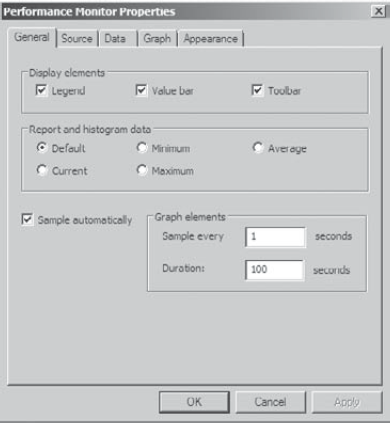
Source tab On the Source tab (shown in Figure 6),
you can specify the source for the performance information you would
like to view. Options include current activity (the default setting) or
data from a log file. If you choose to analyze information from a log
file, you can also specify the time range for which you want to view
statistics. We'll cover these selections in the next section.
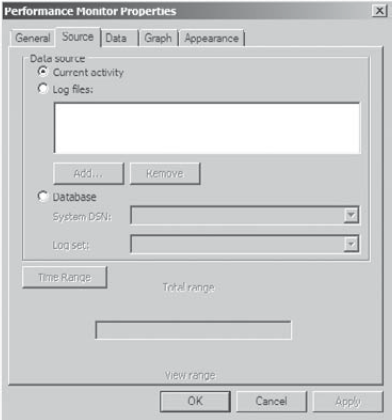
Data tab The Data tab (shown in Figure 7)
displays a list of the counters that have been added to Performance
Monitor display. These counters apply to the Chart, Histogram, and
Report views. Using this interface, you can also add or remove any of
the counters and change properties, such as the width, style, and color
of the line, and the scale used for display.
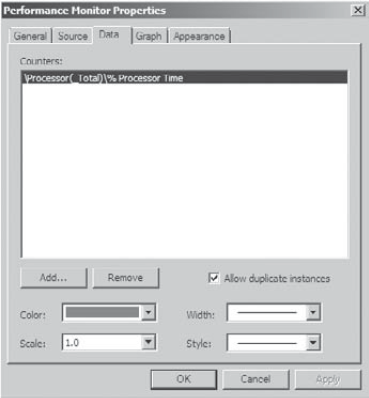
Graph tab On the Graph tab (shown in Figure 8),
you can specify certain options that will allow you to customize the
display of Performance Monitor views. First you can specify what type
of view you want to see (Line, Histogram Bar, or Report). Then you can
add a title for the graph, specify a label for the vertical axis,
choose to display grids, and specify the vertical scale range.
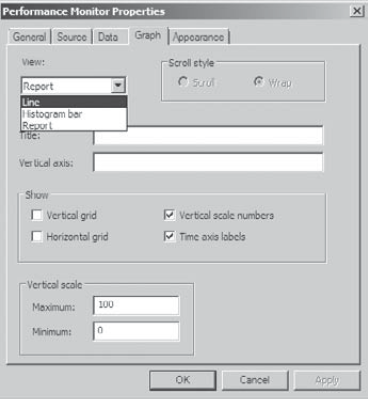
Appearance tab Using the Appearance tab (see Figure 9),
you can specify the colors for the areas of the display, such as the
background and foreground. You can also specify the fonts that are used
to display counter values in Performance Monitor views. You can change
settings to find a suitable balance between readability and the amount
of information shown on one screen. Finally, you can set up the
properties for a border.
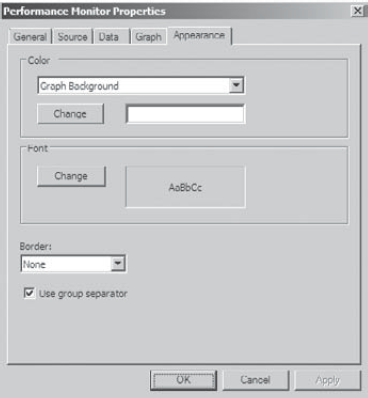
Now that you have an idea of the types of
information Performance Monitor tracks and how this data is displayed,
take a look at another feature that you will use to save and analyze
performance data.
|